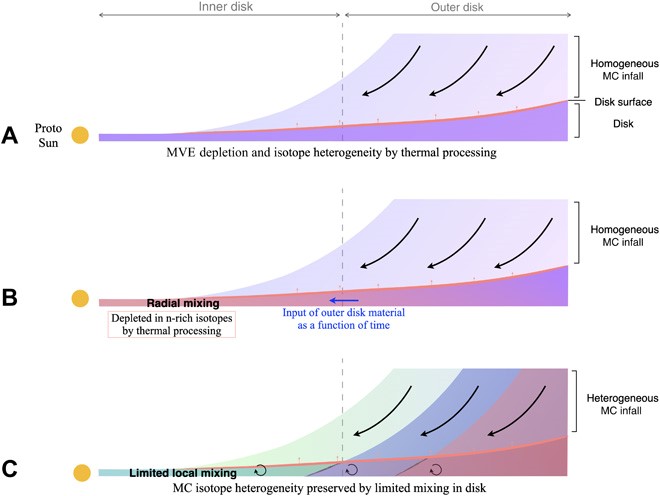
In order to explain the present compositions of the planets and other rocky bodies in our solar system, we must deconvolve their starting compositions and evolutionary histories. One way to accomplish this is by investigating the isotopic compositions of meteorites. As remnants of the early solar system, meteorites often record the isotopic compositions and chemical/physical conditions present during their formation. The isotopic compositions of meteorites can be used not only to look back at the compositions of rocky bodies in the early solar system, but also to peer into the composition of the stellar neighborhood from which our Sun developed.
A study by Yaray Ku and Stein Jacobsen from the Department of Earth and Planetary Sciences at Harvard University measured the different isotopes of potassium found in 30 ordinary, carbonaceous, and enstatite chondrite meteorite samples to learn about the starting composition and mixing dynamics of the early solar system. Their study finds that different planetary materials (planets, asteroids, and meteorites) generally have different potassium isotope compositions. These distinct potassium isotope compositions join a number of other isotope systems (e.g., oxygen, chromium, and titanium) that seem to indicate that planetary bodies formed in environments with distinct isotopic components. Ku and Jacobsen argue these results are best explained if the isotopic compositions of planetary materials were inherited locally from the protosolar molecular cloud. Radial mixing in the early protoplanetary disk would have to have been limited to preserve these isotopic differences as solid bodies formed. Furthermore, later solar system-wide scattering of material during planet migration must have occurred after these distinct isotopic compositions were codified. This indicates that the isotopic compositions of planetary bodies provide information about local isotopic heterogeneity of the protosolar molecular cloud. READ MORE